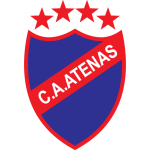Not many football fans outside Uruguay knows Club Atletico Atenas.
The modest Uruguayan football club plays in Uruguay second division. Though, since last August, it became a bit more famous after Mexican Grupo Pachuca has purchased it. The Mexican commercial organization own Club Pachuca, and also Club Léon, both are Mexican clubs.
The group also acts outside of their country. They own the Chilean club Everton and has some influence in Tallers Cordoba of Argentina. The Uruguayan club Atenas is their latest addition.
It's not a coincidence that Pachuca has decided to enter Uruguayan football. During the last couple of years, the migration of footballers from Uruguay to Mexico became the hottest trend.
Liga MX imports Latin American footballers
The Mexican league is relatively affluent in comparison to other leagues in Latin America. Generally, only the Brasileirão, the Brazilian league, is as wealthy as the Liga MX. The MLS is on its way to becoming an attractive competition as well. Still, for now, only a few can outlearn the average salary of players in Mexico.
The Common language and some cultural motives are essential factors as well for Latin players when they choose Mexico. The fact that Hispanic players in Mexico could obtain a Mexican nationality after a couple of years is also attracting many of them to join. Numerous players arrived in Mexico as foreigners, represented Mexico in the national team or even stayed in the country with their families once they retired.
All those reasons made the Mexican league an 'importing league', a one that attracts players from all over South America.
Argentina first, Uruguay a close second
The country that sends the highest numbers of players is Argentina. With that said, during the past decade or so, different countries turned popular suppliers as well. In 2015 it was Colombia; a year later it was Chile; in 2017 it was Peru, and in 2018 - Ecuador. In the past two years, the trend is Uruguay.
Currently, Argentina is still on top of Liga MX's suppliers' list with 43 Argentinian players. In the second place, with not less than 32 players registered this season it's Uruguay. Clubs like Queretaro (seven Uruguayans) and Puebla (five), are leading the line, that is not exclusively for players.
Uruguayans are nothing new in Mexico. There were always Uruguayans players in the league, including a few internationals like Nicolás Olivera, Egidio Arévalo Ríos or Sebastián Abreu. At the moment there’s one La Celeste, the Uruguay national team, in Mexico, the forward Jonathan Rodríguez from Cruz Azul.
However, the trend that started a few years back is different. Mexican clubs have decided to change the approach of signing proven players, and start searching for potentials.
Club América signed Brian Lozano in 2016. Back then, Lozano was 21 years old. Although he already made his international debut, he was considered a future potential for Uruguay. Lozano didn't get the chance in America, was loaned to Uruguayan mega-club Nacional, but made his expected breakthrough only when he moved to Santos Laguna. In the past year or so, Lozano became a permanent squad member for Uruguay, that only an injury he suffered before the start of the season tore him from the national selection.
Due to this setback, Lozano won't play anytime soon. Still, this model of a transfer target and his profile was copied by several Mexican clubs. Tigres has signed the talented Leonardo Fernandez from Fenix and immediately loaned him to Universidad de Chile and Toluca. This way, he can gain experience before coming back to one of the best teams in Mexico.
The same goes for Club America, that singed Sebastian Caceres from Liverpool (Uruguay), as well as Federico Viñas of Juventus from Uruguay 2nd division. Viñas became an instant hit with America and earned a contract until 2024 while playing as well for the Uruguayan Olympic team.
Not only the big clubs in Mexico are looking for young Uruguayan talents. Puebla signed Maximiliano Araújo and Emanuel Gularte, both like Viñas, part of the Uruguayan Olympic team. There are more Mexican clubs in the market for Uruguayan talent.
Money, Possibilities and Spirit
But the question is why in a country with a massive pool of talents and a good football infrastructure like Mexico, suddenly a trend of young Uruguayan players has emerged? The answer is probably a mix of several reasons:
Financial reasons. Players in Mexico demand higher salaries than those from Uruguay, which makes the latter more affordable and not less talented.
Stepping Stone. Uruguayan players can improve during their time in Mexico and then use it as a platform to showcase their skills before a move to Europe.
Garra Charrúa. Maybe the most critical reason, and this one comes from the Mexican side. As mentioned before, there is no shortage of talented Mexican players. However, the typical Mexican player is stable and calm. They all work hard and trying to do their best. Still, it's is rare to find players with the extra motivation that might even get them in troubles, unlike the average Uruguayan player. The famous Uruguayan mentality of "putting every effort needed" is filling a gap in Mexican football. The clubs in Mexico appreciate this quality, so they look to acquire as much as they can, and the earliest as possible. No wonder then, that Pachuca has decided to enter to Uruguay with Atenas.
By the way, this trend is not exclusive for players. There are also three Uruguayan managers in the league—Roberto Dante Siboldi in Cruz Azul, Guillermo Almada in Santos Laguna and Paolo Pezzolano in Pachuca. As education is a key in the Uruguayan football approach, with or without the famous Garra Charrúa, trainers with this mindset are gradually becoming, a demanded product.
Is the Uruguayan trend here to stay? It is probably too early to answer. We could already see that it has a positive impact on the Liga MX. More players are arriving from Uruguay, and the Garra Charrúa spirit is adding for the competitive level of the league. In the long run, even the Mexican National team might enjoy its benefit.
Photo via Cruz Azul official Twitter account.





